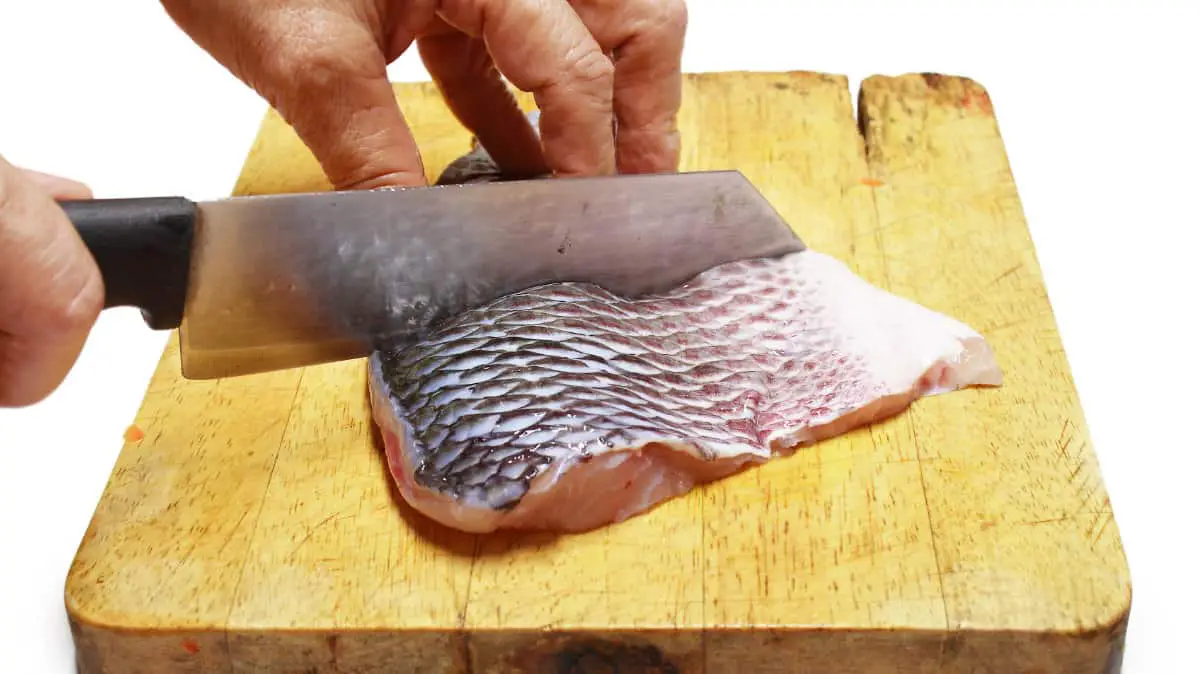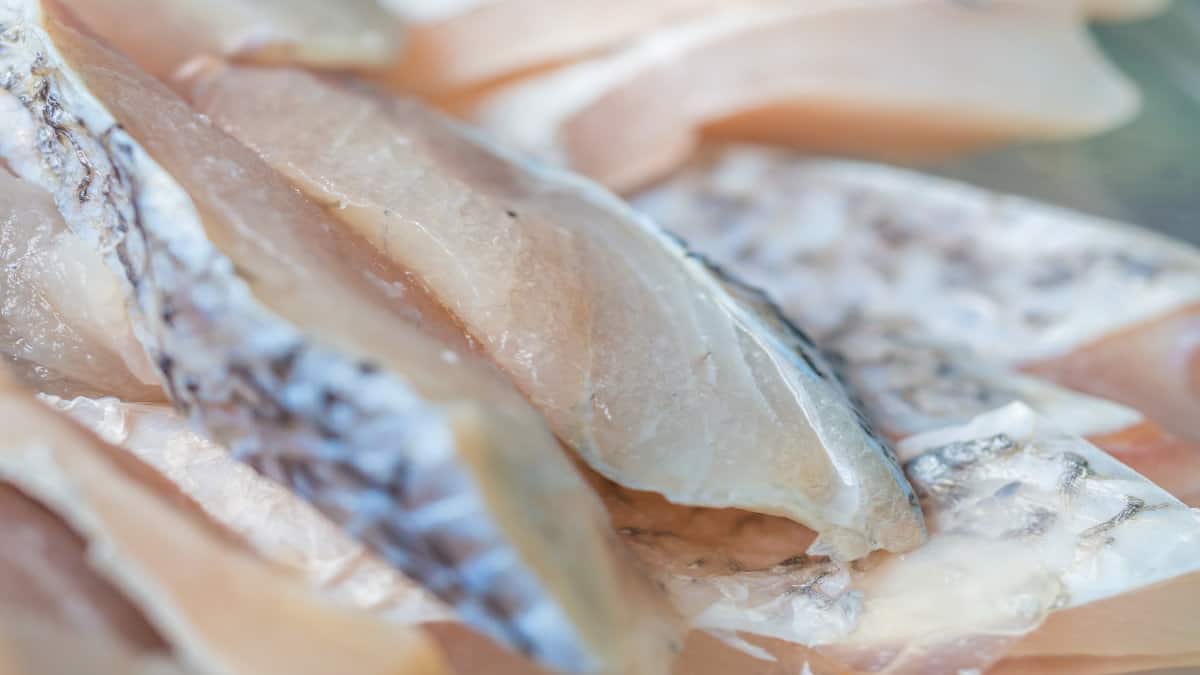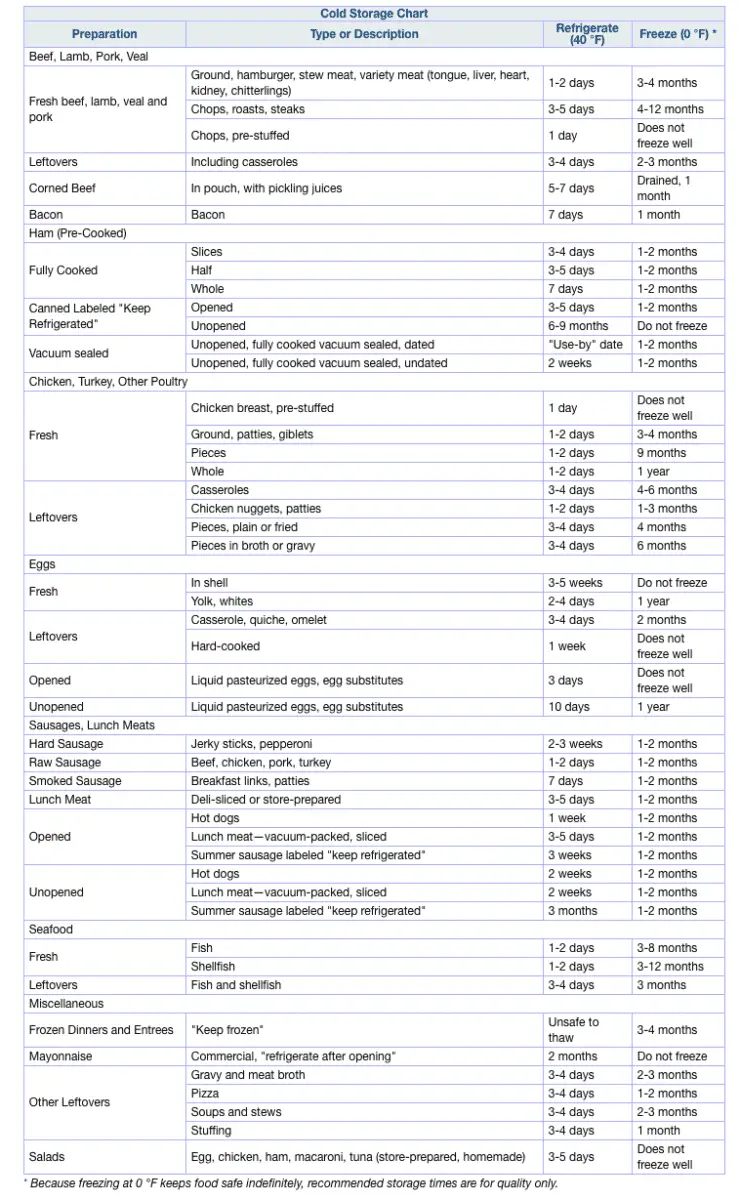If you’ve ever come home from an awesome fishing trip to realize you have more striped bass than you could possibly eat before it goes bad, you’re not alone! While an epic haul on the water is every fisherman’s dream, knowing what to do with your prized catch once you get home can be difficult. Freezing is one option.
But this begs the question, is it OK to freeze striped bass? How To properly Freeze Striped Bass And Avoid Freezer Burn?
You can freeze striped bass, but the compromise will always be a bit of the texture. By vacuuming-sealing your striped bass, you will be able to avoid freezer burn. The texture will change, but the striped bass will still keep its flavor. There are different techniques you can also use if you don’t have a vacuum-sealer. You can also try to spring for a deep freezer.
Striped bass, also called “stripers,” have large filet sizes and have a texture that can stand up to the rigors of the freezing, defrosting, and cooking process with ease.
Whether you want to freeze them for a short time or save them for months, if you are careful to prepare the meat well and protect it from freezer burn, you can enjoy it for a long time.
As a surf angler, I wanted to know how to store and freeze my catch correctly, and also to prevent tossing my fish into a trash can due to freezer burn.
So, I spent a decent time reading and researching so I could freeze my catch the right way. Keep reading for more details on avoiding freezer burn and freezing techniques.
What is freezer-burn? How to avoid it when you freeze striped bass?
Freezer burn is what happens to food in your freezer when air gets to it.![]() This results in the dehydration and oxidation of your food. So, it is easy to understand that if your striped bass is freezer burnt, it is now dry.
This results in the dehydration and oxidation of your food. So, it is easy to understand that if your striped bass is freezer burnt, it is now dry.
One important thing to remember about freezer burn is when it does happen, that your food is still safe to eat.
The color or texture might be different, but the food has not been exposed to anything harmful: since it is frozen, no bacteria or microorganisms have spoiled it.
While for most food such as frozen vegetables or ice cream, you can simply wait for the icicles to melt away to eat it, the situation is a little different with striped bass. As mentioned above, you can still eat it, but it won’t be the same.
How to Eliminate Air to Avoid Freezer Burn?
Since freezer burn is caused by air, the best solution would be to eliminate that factor with a vacuum-sealer. Vacuumed sealers are easy to find at your local appliance store or online.
The machine removes all the air from the bag you have placed your fish in and then properly seals it for you. This means that not only has all the air been removed, but none can get in either.
Sealing the bag perfectly also means that the moisture of the fish won’t evaporate, thus extending the striper’s life in the freezer.
When vacuum-sealing, always be careful not to overfill the bag as this could cause it to pop in the freezer. This would defeat the whole purpose of keeping it from freezer burn.
In addition to vacuum-sealing, you can also try placing the baggies striped bass in a deep freezer (or chest freezer) instead of in a home freezer.
The deep freezer is generally kept at a much lower temperature than your home freezer so that the fish will freeze faster. The slower the fish freeze, the more damage has been done to the texture.
While it is true that nothing will compare to eating fresh fish striped bass, vacuum-sealing will at least keep the mild flavor of the striped bass. You want to freeze your striper so that it is ready to cook once you’ve thawed it.
How to Prepare Striped Bass to Freeze?

While you can certainly freeze your fish whole, it will make your life complicated when the time comes to defrost and cook it down the road.
I would suggest before you store your striped bass in the freezer. It is best to clean it, then fillet or steak cut it or the way you prefer.
I prefer to steak cut striped bass after I removed all the gills and scales. This method is good when you cook for some delicacies like ‘Sinigang’ with tamarind soup. 🙂
Another way that I’ve learned is to fillet the fish. When filleting the striped bass, you want to cut a lot of the bloodline and red meat off it. I don’t usually fillet striped bass so often.
What You Need to Fillet Striped Bass
Filleting striped bass![]() is simple and doesn’t require any fancy equipment.
is simple and doesn’t require any fancy equipment.
Here is everything you’ll need:
- Freezer-grade plastic bags
- An electric knife (if you do not have one of these, any large, sharp knife will do the trick)
- A very sharp fillet knife
- Access to cold water (ideally ice water in a bowl)
- A large cutting board or butcher-block counter
Step by Step Process for Filleting Striped Bass
When you start working on the fish, first gut and head the striped bass as you normally would when eating it fresh.
Here are some tips to help set you up for fish storage success:
1. Clean the fish thoroughly by rinsing in clean, cold water.
2. Take your knife and make a shallow cut right behind the gill plate straight down toward the cutting board. Carefully angle the knife back toward the tail and continue your cut until you reach the tail. Do not cut into the backbone – instead, you want your knife to glide along with it, using it as a guide.
3. Flip the now-cut fillet over so it is lying skin side down; use the electric knife or the fillet knife to cut the meat-free from the skin carefully.
4. Repeat this process on the other side.
5. Briefly soak the fillets in icy, cold water to make the next step as simple and efficient as possible.
6. The fillets will be covered/lined with a red layer of blood vessels called the “bloodline.” This part needs to remove carefully to prevent the striped bass from taking on an overly “fishy” taste when you cook it. The red layer is very thin, so take your time and save as much of the white meat as possible – you don’t want to waste an ounce of your hard-earned bounty!
7. Place your striper fillets in freezer bags then remove the air with a vacuum sealer. Many people add herbs or lemon juice to the water to help subtly flavor the meat for cooking.
8. Remember to label your bags with the date so that you can quickly know what fillets to use first when you begin pulling them out to thaw and cook.
Tips: I would recommend freezing your striper fillets or cut size in individual bags for easy portioning when they go to thaw and cook the fish later.
How Else Can You Freeze Striped Bass?

Though less effective than vacuum-sealing, there are other techniques people have used to freeze striped bass.
The simplest of these suggested alternatives is simply putting the fillets of striper into plastic freezer bags and doing your best to push all the air out.
Make sure none of these bags have any holes in them, as the air will easily find its way in.
For an additional layer of protection, you could also add the bagged fillets to a container.
You can also use silicone reusable freezer bags if you’d like, always making sure to get as much of the air out as possible.
Another method to freeze striped bass is similar to the first one, but while adding water to the bag.
Essentially, place your fillets in the freezer bags, then add saltwater until the fish is fully covered.
Remove all the air out of the bag and seal it. Then place in a container if you feel it is necessary.
One method of ensuring there is no air left is as follows:
- Have a bucket of saltwater ready.
- Place the fillets in the freezer bag.
- Seal the bag halfway.
- Place the bag above the bucket with the seal upwards.
- Submerge the bag as deep as possible.
- You will notice air bubbles rise to the top.
- Seal the bag the rest of the way.
The air gets pushed up because it is less dense than water.
You can also place these bags/containers in a deep freezer instead of in your home freezer.
These methods allow the fish to keep for a few months. The downsides to these sealing methods are
a) the possibility that air remains in the bags and
b) they take up a lot of space in your freezer compared to vacuum-sealing.
But, they work.
How Long is a Striped Bass Good for?
Striped bass is a hardy fish that holds up well when defrosted, but it also needs to be adequately prepped before being tossed in the deep freeze. When frozen correctly, it can keep for up 3 to 8 months before losing flavor.
You want to make sure that the fish never exposed to room temperature for longer than 2 hours. Exposure to warmth begins to degrade the quality of the meat almost immediately.
Here are some guidelines you should follow:
- Bacteria grow incredibly quickly rapidly at temperatures between 40 °F and 140 °F.
- Striped bass should be tossed in the trash immediately if left out for more than 2 hours at room temperature.
- You can safely keep your fish in the refrigerator for 2-3 days, but you will want to move it into the freezer for long-term storage.
- If you are planning to freeze your fish once you get home, you will want to make sure that you have cooler for the fish once you have caught it.
- If you don’t have any cooler, I’ll suggest bleeding the fish that you plan to take home. You probably know how to bleed the fish and place it on ice when you reel it in.
Taking precautions to protect your catch and keep it always chilled is the only way to assure that you get to enjoy the fruits of your labor long after you have caught it.
I found this cold storage chart below from USDA![]() , check it out.
, check it out.


If you purchased your fish from the store, expect an even shorter shelf life.
How Do You Know Your Striped Bass Has Gone Bad?
Like most meats, you will usually be able to tell if it has gone bad by smelling and checking the fish.
- A rancid, acidic, or just ugly stomach-turning smell likely indicates that the fish has gone past its current sell-by date.
- Other telltale signs of bad striped bass are dull color and slimy texture.
- Fisheye not clean and bulge too much, and gills turning into brown color.
If it looks and feels different than that day you caught it or bought it, a rule of thumb is to avoid eating it.
How to Thaw Frozen Striped Bass?
The best way to thaw fish once it has been frozen is to leave it in the refrigerator overnight.
Striped bass that has been defrosted in the fridge can be easily kept there for an additional 1 to 2 days before you cook it.
Make sure to keep it wrapped or sealed in a plastic bag.
Exposing it to the open air in your refrigerator can take on the smells and flavors of everything else hanging out there.
How to Thaw Striped Bass When You’re in a Hurry?
You can always submerge the freezer bag in a bowl of cold water for an hour, or until the meat has softened.
Keep in mind that striper fillets that have been thawed in cold water should be cooked immediately to avoid bacteria growth that can make you sick.
Depending on the fillets’ or cut size, it may take less or more time, so check the water frequently to make sure that it is still cold.
If it begins to come to room temperature and the fish is frozen, replace the warm liquid with fresh, cold water.
Avoid speeding up the process by using hot water.
This will cause the outer layer of meat to thaw much faster than the flesh at the center of the fillet and can break down the texture of the fish.
If you leave it in the warm water for too long, bacteria will begin to grow almost immediately.
Summary:
As you can see, freezing striped bass![]() is simple, whether you have a vacuum-sealer or not. The number one thing to pay attention to is removing all the air from the freezer bags, and your fish will still taste amazing when you serve it up months later.
is simple, whether you have a vacuum-sealer or not. The number one thing to pay attention to is removing all the air from the freezer bags, and your fish will still taste amazing when you serve it up months later.
It should be said that no matter which method you choose (vacuum-seal or freezer bag), you still won’t get the same texture as eating the striper fresh. It is a shame since the striped bass is known for its fine texture, but you’ll still be able to enjoy the flavor down the line.

